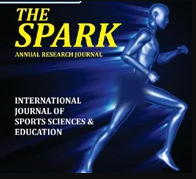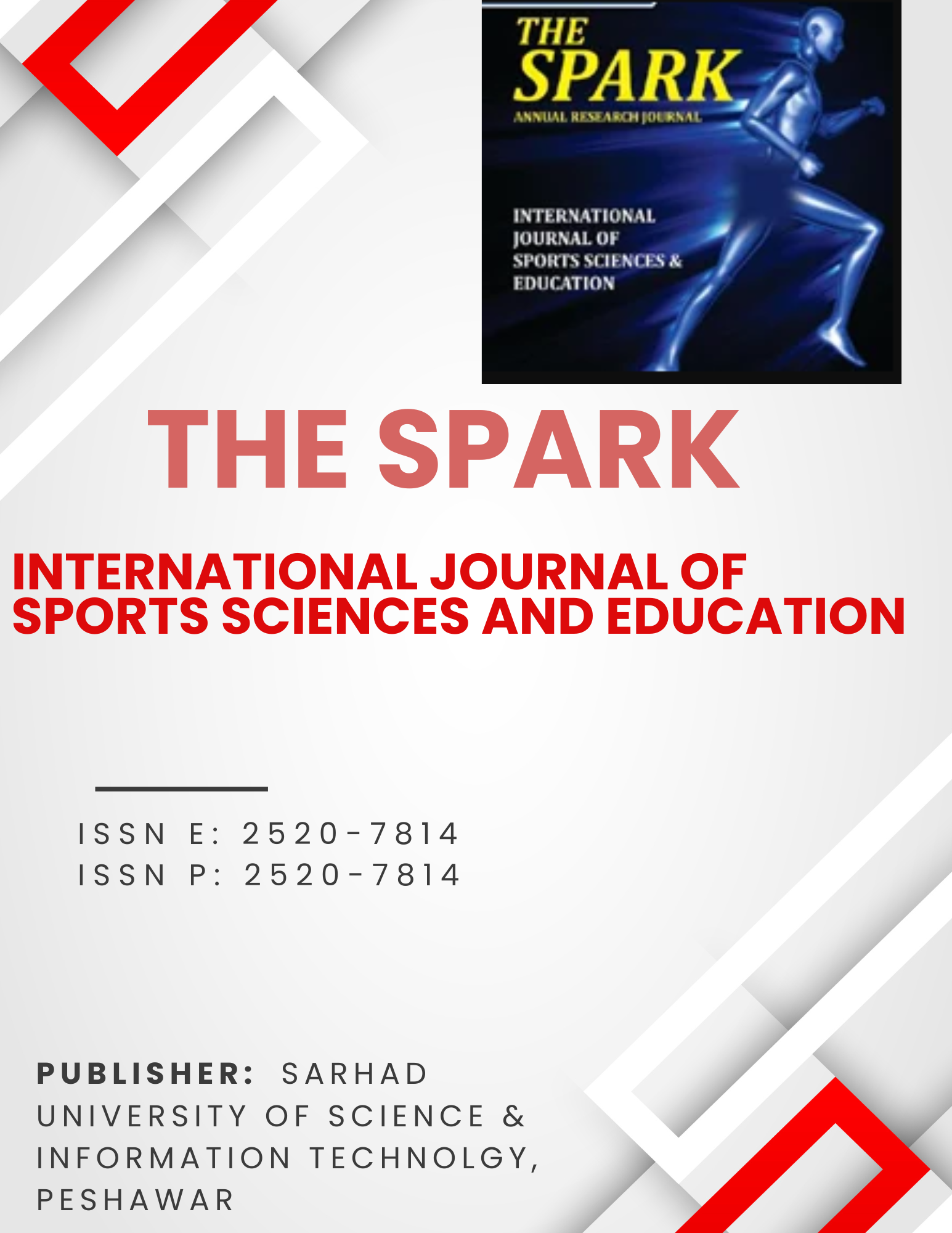CAUSES OF STUDENTS’ ANTISOCIAL BEHAVIOR AT SECONDARY LEVEL SCHOOLS
Keywords:
Aggression, Behavior, Income, Parents, Peers, Socioeconomic StatusAbstract
Antisocial behaviour refers to the destructive, harmful, negative actions or maladaptive behaviour of an individual towards other individuals or things in the society. These negative behaviours consist of unlawful activities and harm the people in interpersonal manners. Such behaviours occur due to the result of unsatisfactory social, ethical, moral, and/or psychological development of children at home, school, and/or under socialization in the society. Therefore, the present research study aimed to delve, uncover, and highlight the major causes (e.g., school related factors, parental factors, parental support, socioeconomic factors) that influence secondary school students’ antisocial behaviour in province Punjab, Pakistan. The present study was descriptive survey type by method and quantitative by approach. A cross-sectional type survey was conducted to elicit the perceptions of the research subjects. All students and teachers of public sector secondary schools in province Punjab were the target population while all secondary school students and teachers in public sector schools in district Faisalabad constituted the accessible population. Through proportionate stratified random sampling technique, a sample of 150 male teachers and 400 male students of 10th grade were taken in the sample. A self-developed and structured questionnaire was used as a research instrument for data collection. Both types of statistical techniques (e.g., descriptive, inferential) were used for the data analysis. It was concluded from the results of this study that school related factors (e.g., teacher-student relationships, peers’ influence); parental factors (e.g., poor father-child relationships, parental aspirations, parental negligence); parental support (e.g., empathy, guidance, material resources); and socioeconomic factors (e.g., parental income) are some of the major causes of secondary school students’ antisocial behavior.
References
Aboh, J. U., Nwankwo, B. E., Agu, S. A., & Chikwendu, C. E. (2014). A Study of Factors Influencing Maladaptive Behaviour among High School Students. International Journal of Psychology and Behavioral Sciences, 4(6), 215-220.
Aguilar, B., Sroufe, L. A., Egeland, B., & Carlson, E. (2000). Distinguishing the early-onset/ persistent and adolescent-onset antisocial behavior types: from birth to 16 years. Development and Psychopathology, 12(2), 109-132.
Akubue, A. U. (1991). Classroom Organization and Management: A 5-Point Strategy. Ibadan: Wisdom Publication Limited.
Ayenibiowo, K. O., & Akinbode, G. A. (2011). Psychopathology of bullying and emotional abuse among school children. IFE Psychologia: An International Journal, 19(2), 127-141.
Baker, J. A. (2006). Contributions of teacher–child relationships to positive school adjustment during elementary school. Journal of School Psychology, 44(3), 211-229.
Baker, J. A., Grant, S., & Morlock, L. (2008). The teacher-student relationship as a developmental context for children with internalizing or externalizing behavior problems. School Psychology Quarterly, 23(1), 3-15.
Bandura, A. (1977). Social Learning Theory. Englewood Cliffs, NJ: Prentice-Hall. Berkowitz, R.,& Benbenishty, R. (2012). Perceptions of teachers’ support, safety and absence from school because of fear among victims, bullies, and bully-victims. American Journal of Orthopsychiatry, 82(1), 67-74. doi: 10.1111/j.1939-0025.2011.01132.x
Bor, W., Najman, J. M., Andersen, M. A., O’Callaghan, M., Williams, G. M., & Behrens, B. C. (1997). The relationship between low family income and psychological disturbance in young children: An Australian longitudinal study. Australian and New Zealand Journal of Psychiatry, 31(5), 664-675.
Bradley, R. H., & Corwyn, R. F. (2002). Socioeconomic Status and Child Development. Annual Review of Psychology, 53(3), 371-399.
Brennan, P. A., Grekin, E. R., & Mednick, S. A. (1999). Maternal smoking during pregnancy and adult male criminal outcomes. Archives of General Psychiatry, 56(3), 215-219.
Brown, B. (2004). Adolescents’ relationships with peers. In R. Lerner & L. Steinberg (Eds.), Handbook of adolescent psychology (pp. 363-394). New York: Wiley.
Burt, S. A., & Donnellan, M. B. (2009). Development and validation of the subtypes of antisocial behavior questionnaire. Aggressive Behavior, 35(5), 376-398.
Carney, T., Myers, B. J., Louw, J., Lombard, C., & Flisher, A. J. (2013). The Relationship between Substance Use and Delinquency among High-School Students in Cape Town, South Africa. Journal of Adolescence, 1(1), 1-9.
Clare, H. (2006). Antisocial Behaviour: Gale Encyclopedia of Children Health. New York: Gale Group.
Defoe, I. N., Farrington, D. P., & Loeber, R. (2013). Disentangling the Relationship between Delinquency and Hyperactivity, Low Achievement, Depression, and Low Socioeconomic Status: Analysis of Repeated Longitudinal Data. Journal of Criminal Justice, 41(1), 100-107.
Durojaiye, M. O. (2003). Psychological Guidance of the school child (1st ed.). Ibadani: Evans Brothers.
Erickson, K. G., Crosnoe, R., & Dornbusch, S. M. (2000). A social process model of adolescent deviance: Combining social control and differential association perspectives. Journal of Youth and Adolescence, 29(4), 395-426.
Eron, L. D., Huesman, L. R., & Zelli, A. (1991). The role of parental variables in the learning of aggression. In D. J. Pepler & K. J. Rubin (Eds.), The development and treatment of childhood aggression (pp. 169-188). Hillsdale, NJ: Larence Erlbaum.
Farrington, D. P. (2004). Conduct disorder, aggression, and delinquency. In R. M. Lerner & L. Steinberg (Eds.), Handbook of adolescent psychology (pp. 683-722). New York: Wiley.
Farrington, D. P. (2005). Childhood origins of Antisocial Behaviour. Clinical Psychology and Psychotherapy, 12(3), 177-190. doi: 10.1002/cpp.448
Fatima, S., & Malik, S. K. (2015). Causes of Students’ Aggressive Behavior at Secondary School Level. Journal of Literature, Languages and Linguistics, 11(1), 49-65.
Fischer, D. G. (2004). Family size and delinquency. Perceptual and Motor Skills, 58(2), 527-534.
Gaika, L. P., Abdullaha, M. C., Eliasa, H., & Ulia, J. (2010). Development of Antisocial Behaviour. Procedia Social and Behavioral Sciences, 7(C), 383-388.
Garaigordobil, M., MartÃnez-Valderrey, V., & Aliri, J. (2014). Victimization, perception of violence, and social behaviour/ Victimización, percepción de la violenciay conducta social, Infancia y Aprendizaje. Journal for the Study of Education and Development, 37(1), 90-116. doi: 10.1080/02103702.2014.881651
Hallahan, D. P., & Kauffman, J. M. (2006). Exceptional Learners: Introduction to Special Education (9th ed.). Boston: Allyn and Bacon.
Hamre, B. K., & Pianta, R. C. (2001). Early teacher–child relationships and the trajectory of children’s school outcomes through eighth grade. Child Development, 72(2), 625-638.
Heinze, H. J., Toro, P. A., & Urberg, K. A. (2004). Antisocial behavior and affiliation with deviant peers. Journal of Clinical Child and Adolescent Psychology, 33(2), 336-346. doi:10.1207/s15374424jccp3302_15
Herrenkohl, T. I., Tajima, E. A., Whitney, S. D., & Huang, B. (2005). Protection against antisocial behavior in children exposed to physically abusive discipline. Journal of Adolescent Health, 36(6), 457-465.
Herrenkohl, T. L., Maguin, E., Hill, K. G., Hawkins, J. D., Abbott, R. D., & Catalano, R. F. (2000). Developmental risk factors for youth violence. Journal of Adolescent Health, 26(7), 176-186.
Kayne, R. (2012). Recognizing Antisocial Behaviour in Children. New York: Conjecture Corporation.
Kazdin, A. E. (1987). Treatment of antisocial behavior in children: Current status and future directions. Psychological Bulletin, 102(2), 187-203.
Kellam, S. G., Ensminger, M. E., & Turner, R. J. (2007). Family structure and the mental health of children. Archives of General Psychiatry, 34(9), 1012-1022.
Khatri, P.,& Kupersmidt, J. B. (2003). Aggression, peer victimization and social relationships among Indian youth. International Journal of Behavioral Development, 27(1), 87-95.
Le, T. N., & Stockdale, G. (2011). The Influence of School Demographic Factors and Perceived Student Discrimination on Delinquency Trajectory in Adolescence. Journal of Adolescent Health, 49(3), 407-413.
Legleye, S., Beck, F., Khlat, M., Peretti-Watel, P., & Chau, N. (2010). The Influence of Socioeconomic Status on Cannabis Use among French Adolescents. Journal of Adolescent Health, 50(3), 395-402.
Light, J. M., Rusby, J. C., Nies, K. M., & Snijders, T. A. (2013). Antisocial behavior trajectories and social victimization within and between school years in early adolescence. Journal of Adolescent Research, 24(2), 322-336. doi:10.1111/jora.12055
Ma, H. K. (2005). The relation of gender-role classification to the prosocial and antisocial behaviour of Chinese adolescents. The Journal of Genetic Psychology, 166(2), 189-201.
MacMahon, & V. L. Quinsey (Eds.), Aggression and Violence throughout the Lifespan (pp. 52-82). Newbury Park, CA: Sage.
Mantzicopoulos, P. (2005). Conflictual relationships between kindergarten children and theirteachers: Associations with child and classroom context variables. Journal of School Psychology, 43(5), 425-442.
Mash, E. J., & Wolfe, D. A. (2016). Abnormal Child Psychology. Belmont, CA: Wadsworth Publishing Company.
Moeller, T. G. (2001). Youth aggression and violence: A psychological approach. Mahwah, NJ: Lawrence Erlbaum Associates.
Moffitt, T. E. (1993). Adolescence- limited and life-course-persistent antisocial behavior: A developmental taxonomy. Psychological Review, 100(4), 674-701.
Murray, J., & Farrington, D. P. (2005). Parental imprisonment: effects on boys' antisocial behavior and delinquency through the life-course. Journal of Child Psychology and Psychiatry, 46(12), 1269-1278.
Murray, J., Farrington, D. P., and Sekol, I. (2012). Children’s antisocial behavior, mental health, drug use, and educational performance after parental incarceration: a systematic review and meta-analysis. Psychological Bulletin, 138(2), 175-210.
Murray, J., Farrington, D. P., & Eisner, M. P. (2009). Drawing conclusions about causes from systematic reviews of risk factors: The Cambridge Quality Checklists. Journal of Experimental Criminology, 5(1), 1-23. doi:10.1007/s11292-008-9066-0
Murray, J.,& Murray, L.(2010). Parental incarceration, attachment and child psychopathology. Attachment and human development, 12(4), 289-309.
Nelson, R. J. (2006). Biology of Aggression. New York: Oxford University Press.
Newson, J., & Newson, E. (1989). The extent of parental physical punishment in the UK. London: Approach.
Nwankwo, B. O., Nwoke, E. U., Chukwuocha, U. M., Obanny, A. O., Nwoga, K. S., NIwuagwu, U. O., & Okereke, C. (2010). Prevalence and predictors of antisocial behavior: a cross sectional survey of adolescents in secondary schools in Owerri Municipal, South East Nigeria. Pakistan Journal of Social Sciences, 7(2), 129-139.
O’Connor, E. E., Dearing, E., & Collins, B. A. (2011). Teacher-child relationship and behavior problem trajectories in elementary school. American Educational Research Journal, 48(1), 120-162.
Ojo, I. O. (2015). Causes and prevalence of antisocial behavior among students with hearing Impairment in Ibadan, Nigeria. Journal of Education and Practice, 6(28), 38-43.
Patterson, G. R. (1992). Developmental changes in antisocial behaviour. In R. D. Peters, R. J.
Patterson, G. R., Capaldi, D. M., & Bank, L. (1991). An early starter model for predicting delinquency. In D. J. Pepler & K. H. Rubin (Eds.), The Development and Treatment of Childhood Aggression (pp. 139-168). Hillsdale, NY: Lawrance Erlbaum.
Patterson, G. R., DeBaryshe, B., & Ramsey, E. (1989). A Developmental Perspectives on Antisocial Behavior. American Psychologist, 44(2), 329-335.
Pianta, R. C. (2001). Student-teacher Relationship Scale: Professional Manual. Lutz: Psychological Assessment Resources.
Poggenpoel, M., & Myburgh, C. (2002). The lived experience of aggression in secondary schools in South Africa. Education, 123(1), 161-166.
Robins, L. N. (1991). Conduct disorders. Journal of Child Psychology and Psychiatry, 32(1), 193-212.
Silberg, J. L., Maes, H.,& Eaves, L.J. (2012). Unraveling the effect of genes and environment in the transmission of parental antisocial behavior to children’s conduct disturbance, depression and hyperactivity. Journal of Child Psychology and Psychiatry, 53(6), 668-677.
Smith, C. A., & Farrington, D. P. (2004). Continuities in antisocial behaviour and parenting across three generations. Journal of Child Psychology and Psychiatry, 45(2), 230-247.
Sprinthall, N. A., & Collins, W. A. (1995). Adolescent Psychology: A Developmental View. (3rd ed.). McGraw-Hill Inc.
Willoughby, M., Kupersmidt, J., & Bryant, D. (2001). Overt and covert dimensions of antisocial behavior in early childhood. Journal of Abnormal Child Psychology, 29(3), 177-187.
Wood, J. J., Cowan, P. A., & Baker, B. L. (2002). Behavior problems and peer rejection in preschool boys and girls. Journal of Genetic Psychology, 163(1), 72-88.
Downloads
Published
How to Cite
Issue
Section
License
Submission of an original manuscript to the Journal will be taken to mean that it represents original work not previously published, that it is not being considered elsewhere for publication. And if accepted for publication, it will be published in print and online and it will not be published elsewhere.
The journal main policy reflects in its stance that the publication of scholarly research is exclusively meant to disseminate knowledge and not-for-purposes.








 Name of Journal:
Name of Journal: 